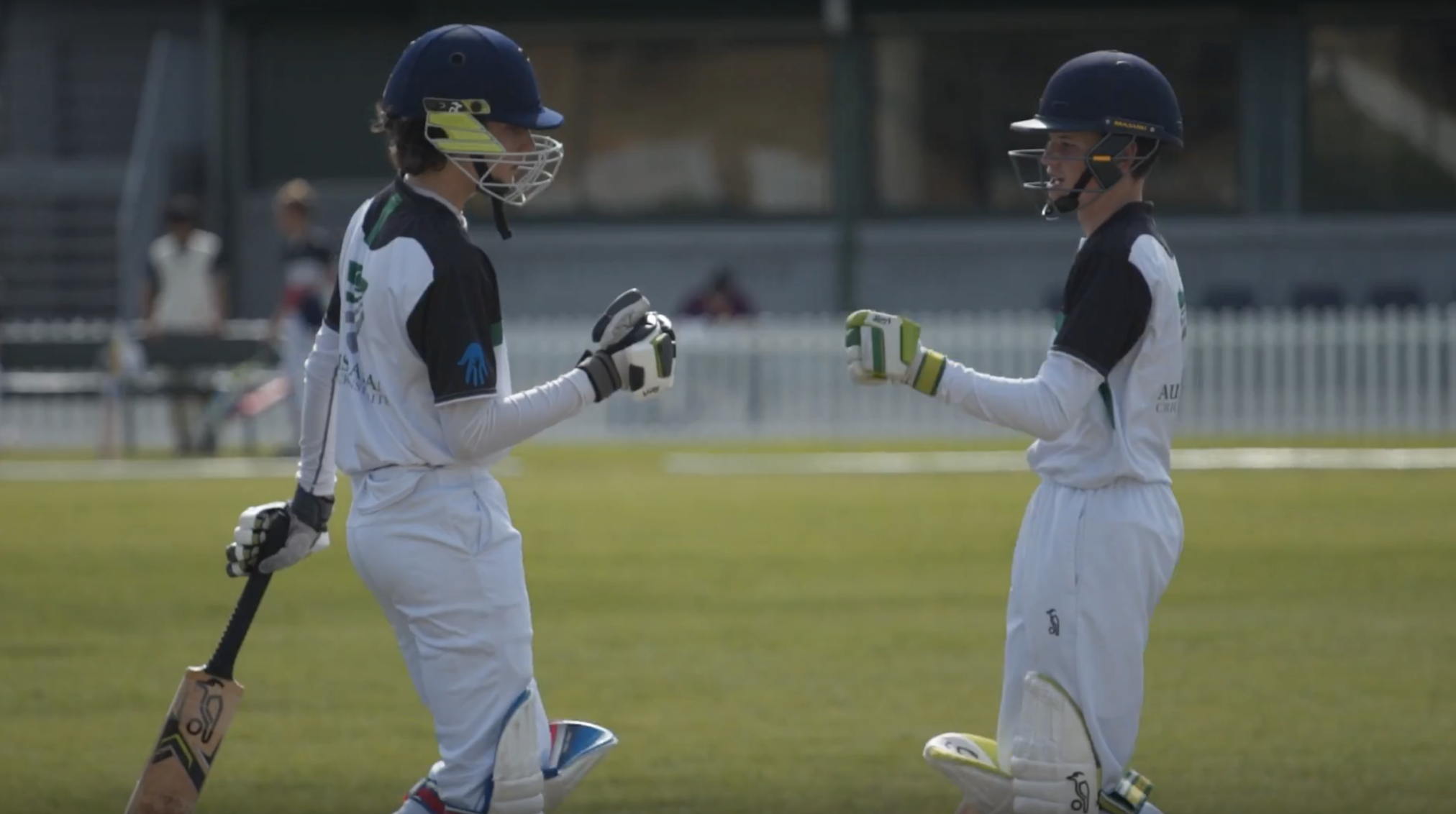Matt Short, the Adelaide Strikers and Victorian Bushrangers young gun was our first live Q&A session special guest to kick off the ACI’s free 4-week Junior Wellbeing & Activity Program.
More than 400 online attendees joined Matt as he discusses early memories of starting out in cricket, his advice on batting and bowling, along with some answers to questions from our attendees.
Below are some edited highlights that were taken from that interview;
ACI: Really appreciate you coming on & joining us Matt, what have you been up to recently?
MS: Keeping pretty busy actually, doing an online University course - Bachelor of Health Science (Nutrition), a few other things around the house like painting - got someone else in to do it though, not me (laughs).
ACI: Where are you from, where’d it all kick-off for you?
MS: I’m a country boy from Ballarat, I started pretty late around 12/13 years of age - I remember my older brother was playing a game and they were short, he had a spare pair of whites, so I filled in. Didn’t bat or bowl, but took a catch and that was one of my first memories of all the boys getting around me. From there I filled in every week for them and enjoyed playing with my brother. I played the next 4 years for East Ballarat, got chosen in the rep sides and my performances there led to playing for Victoria in the U/15’s,17’s & 19’s!
ACI: What’s it like being a younger player trying to fit into that elite environment?
MS: It was really tough being a country boy and not having played too much senior cricket. To come into a locker room with Dave Hussey, Peter Siddle, Chris Rogers & Cam White - I initially felt like I didn’t belong. So, the first year was massive and took me a while to fit in but you’re always going to be put into uncomfortable situations, the more you’re in them, the better off you’ll be.
Group Question: Nathan asked who was/is your biggest inspiration?
MS: Family is a big one for me, starting out, playing with my older brother. My dad also, out the back yard being adjudicator for us three boys, I also have a younger brother. And mum, the commitment and sacrifices she made especially being in the country and travelling a lot.
GQ: A few have asked who’s the fastest bowler you’ve faced, how do you go about it and do you experience fear at all?
MS: Not necessarily, I try to back myself to get into good positions and watch the ball as best as I can! Quickest bowlers I’ve faced would be Mitchell Starc and Jofra Archer. Watching them on TV, their strengths, I’m able to prepare somewhat for when I face them.
GQ: Hunter asks, do you score from ball 1 in a T20, and what’s your general tactics when batting?
MS: Good question, I’m definitely trying to score first ball, whether it be a boundary or single. Intensity goes up but it’s all about sticking to your cues. If the ball is there to hit - hit it! A lot of risk vs reward but stick to your plans and try not to premeditate, don’t second guess yourself and have the clear mindset to score.
GQ: You better known as a batter but you do bowl as well, Sam asks what do you focus on when you come into bowl?
MS: I have a couple of cues when I’m at the top of my mark. The main one being power: when I bowl my bad balls, it’s when I get lazy at the crease - not putting enough effort on the ball or not using my legs enough. So, I’m thinking power, up and over, that fast arm and good follow through!
GQ: A lot of power-hitting questions, what’s some tips for gaining more power when batting?
MS: I’m pretty lucky having some big leavers, being tall with long arms! I’ve worked closely with Brad Hodge at the Vics and his message is always to have a nice stable base, keep your head in line with the ball, hold your shape & stay strong in the shot.
GQ: An Adelaide Strikers fan asks - Rashid Khan, how do you pick his wrong-un, who is your favourite teammate and who’s the hardest worker?
MS: Rash - he’s pretty interesting, the thing with him is, his leg spinner doesn’t turn that much. So, I feel like he’s not going to beat me on the outside of my bat. With his wrong-un, I’m only picking him 50% of the time (laughs)! I try and come down the wicket to him a lot because he’s not going to spin it past my outside edge. It’ not easy to face him though! A favourite teammate at the Strikers of mine is Liam O’Connor, another leggie from WA. He’s a ripper and one of those blokes you love to have around the change rooms. Both being from interstate, we stay at the same hotel, we’re with each other every day and night for a couple of months. It’s been great to get to know him. The hardest worker at the Strikers would have to be Alex Carey I think, not only in the nets but also in the gym - doing extra running etc. must be that footy upbringing. He’d be the first in the nets and the last to leave, always doing that bit extra. That must be his way for making him ready for what’s to come in his career.
ACI: Your favourite part of being a professional cricketer?
MS: I love that I’m a professional in something that I’ve loved doing from when I was young and get a lot out of seeing my family react to when I’m doing well and also when I’m doing poorly. They’ve always got my back and to know that I make them proud is something that I love doing!
ACI: Finally, what tips would you give our youngsters out there to get the most out of this time in isolation?
MS: I know it’s the cricket offseason, but it’s always good to keep the skills up however you can, whether it be getting the tennis racquet out with a tennis ball, taking catches or hitting golf balls against the wall. If you’ve got a backyard big enough, get out there, but basically try and nail the basics so you’re ready to go for pre-season and keep listening to the ACI with all their videos and advice!
For the full interview head to our Facebook page by clicking here
IF YOU WOULD LIKE MORE INFO ABOUT THE 4-WEEK JUNIOR CRICKET WELLBEING & ACTIVITY PROGRAM - CLICK HERE







